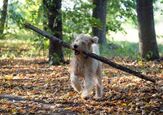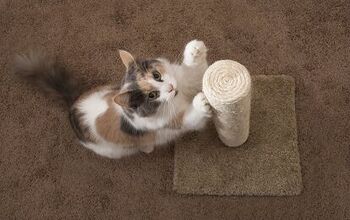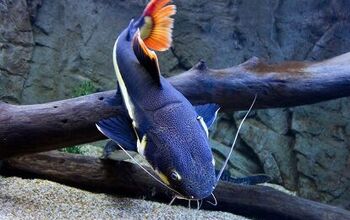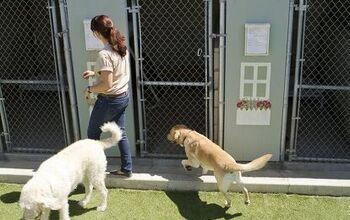How to Choose the Right Perches for Your Bird

A pet bird needs perches to rest, play, and even clean their beak. But when you start shopping for perches for your feathered companion’s cage, you might feel overwhelmed by all of the options. There are perches of all different sizes, materials, and shapes, and you might not know what’s right for your bird. That’s why we’ve put together this brief guide to bird perches.
Different Bird Perch Materials Provide Variety
When it comes to bird perches, it’s best to provide variety—after all, in the wild, they wouldn’t be sitting on the same branch all the time. Giving a bird multiple perches of different thicknesses, textures, and materials will help them get the exercise they need to keep their feet strong.
You can find perches that are the same thickness straight across, as well as those that have varying thicknesses from one end to the other. And there are a few different materials you can choose from for your feathered friend.
Here is a quick breakdown of some of the types of perches you can find in pet stores, along with their benefits and potential drawbacks.
Wood
Wood perches come in a wide range of sizes and shapes, including those that look like tree branches to closely mimic a bird’s wild environment. Just be aware that some woods are toxic to birds, so only buy perches that are sold by reputable brands and that are safe.
Also, many birds like to chew on their wooden perch, so keep an eye on it and replace it when it gets too worn or starts to splinter and becomes a hazard.
An example of a wood perch is the Penn-Plax Y-Shaped Wooden Bird Perch, which is made of natural hardwood, easily attaches to a bird’s cage, and is long-lasting.
Rope
Rope is also used to make perches for pet birds. Again, you want to be sure these perches are made of materials that are safe for birds, so purchase from reputable pet brands that make high-quality products.
Perches made of soft rope can also be a good choice for older birds, as they might find them more comfortable to grip and stand on.
Like wood perches, your bird might chew on this type of perch, so replace it when it gets worn and becomes hazardous to your pet, such as when the fibers can get caught around their feet.
An example of a rope perch is the JW Pet Comfy Bird Perch, which is available in multiple thicknesses and lengths. This multi-colored rope is customizable because it can be bent in whatever shape you need for your bird’s enrichment. Each end of the perch easily attaches to the cage, and it will hold its shape so you don’t need to worry about adjusting it unless you want to.
Plastic, Concrete, Cement, and Sanded Perches
Plastic, concrete, cement, and sanded perches are other options, but they shouldn’t be the main perches that your bird uses the most often.
Durable plastic perches, again made with safe materials, come in various styles, and can be easier to clean. Some plastic perches provide variation in thickness, and some also have a rough texture to help keep your bird’s nails trimmed and provide a surface that’s easier for them to grip. However, if your bird chews on their perches, you don’t want them biting into plastic and potentially swallowing a piece or injuring themselves.
Concrete, cement, and sanded perches have rough surfaces, so they can help file a bird’s nails as they move along them. But their texture may be irritating to the feet and potentially cause injuries.
Tip: If you aren’t sure what types of perches are best for your particular bird, consult with an avian veterinarian.
Choose the Right Sizes When Shopping for Bird Perches
In addition to choosing the right materials for your bird perches, you also need to select the right sizes.
As mentioned above, providing variety is important, so have perches of varying thicknesses throughout the cage to help keep your bird’s feet healthy. When a bird can change their grip based on the differences in the perches they use, they can avoid problems like pressure sores while strengthening their feet. Plus, the variety will also mimic their natural environment in the wild.
Each perch should be the appropriate size for your bird’s feet. Generally, you want their feet to wrap about 2/3 or 3/4 of the way around a perch. If a perch isn’t thick enough, their claws will end up touching, and this won’t be comfortable. On the other hand, if a perch is too thick, they won’t be able to get a good enough grip to be secure on it.
Bottom line: When shopping for perches for your bird, don’t forget to check the diameters, in addition to the lengths, of the options you’re considering. Many brands will also specify the species and sizes of birds that their perches are made for (e.g., small birds vs. large birds, or canaries vs. cockatiels).
Don’t Just Settle for Perches That Come with Cages
Sure, you can find birdcages that come with perches, but those are typically wooden dowels that don’t vary in texture or thickness—and they might not even be appropriate for your bird’s species. Instead, shop specifically for perches that are suitable for your bird and will be safe, comfortable, and sturdy.
Join the PetGuide community. Get the latest pet news and product recommendations by subscribing to our newsletter here.

Lisa Selvaggio is a freelance writer and editor, and our resident cats-pert, with certifications in pet nutrition and pet first aid. She enjoys producing content that helps people understand animals better so they can give their pets a safe and happy home.
More by Lisa Selvaggio























